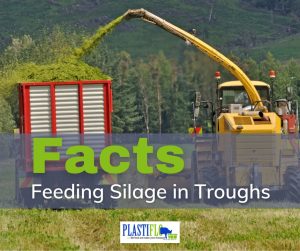All products delivered countrywide!
Feeding silage to your livestock is a cost-effective way of providing them with a nutritious diet. Silage is made from grass or other crops that have been harvested and stored in an airtight container to promote fermentation. This process helps to preserve the nutrients in the feed and makes it easier for livestock to digest.
One way to optimize the benefits of feeding silage is by using a feeding trough. Feeding troughs are designed to provide a controlled environment for feeding livestock, which can lead to several financial benefits for farmers.
Here are some of the key financial benefits of feeding your silage in a feeding trough:
Reduced feed waste: Feeding troughs help to minimize feed waste by preventing livestock from trampling or scattering the silage on the ground. This not only reduces the amount of feed that is wasted but also helps to keep the feeding area clean and hygienic. Less feed waste means that farmers can save money on feed costs and reduce their overall expenses.
Increased feed efficiency: Feeding silage in a feeding trough allows for better control of feed intake, which can lead to increased feed efficiency. This means that livestock are able to get more nutrients from the same amount of feed, which can result in better growth rates and higher milk or meat production. Increased feed efficiency can also reduce the amount of feed required per animal, leading to lower feed costs and higher profits.
Improved animal health: Feeding troughs help to keep the feed clean and dry, which can prevent the growth of harmful bacteria and mold that can affect animal health. By reducing the risk of digestive problems and other health issues, farmers can save money on veterinary costs and ensure that their livestock are healthy and productive.
Time savings: Feeding troughs are designed to make feeding easier and more efficient, which can save farmers time and labor costs. Instead of having to manually distribute the feed to each animal, farmers can use a feeding trough to quickly and easily provide the silage to their livestock. This can also reduce the risk of injuries and accidents that can occur when feeding animals manually.
Improved weight gain: Finally, feeding silage in a feeding trough can lead to improved weight gain in livestock. By providing a consistent and controlled feeding environment, livestock are able to consume the right amount of feed at the right time, which can help them to gain weight more quickly and efficiently. This can result in higher profits for farmers who sell their livestock based on weight.
In conclusion, feeding silage in a feeding trough can provide farmers with several financial benefits, including reduced feed waste, increased feed efficiency, improved animal health, time savings, and improved weight gain. By investing in a feeding trough, farmers can optimize the benefits of feeding silage and ensure that their livestock are healthy, productive, and profitable.
https://www.facebook.com/100025923031102/videos/232478532488211/

https://www.facebook.com/100025923031102/videos/232478532488211/
